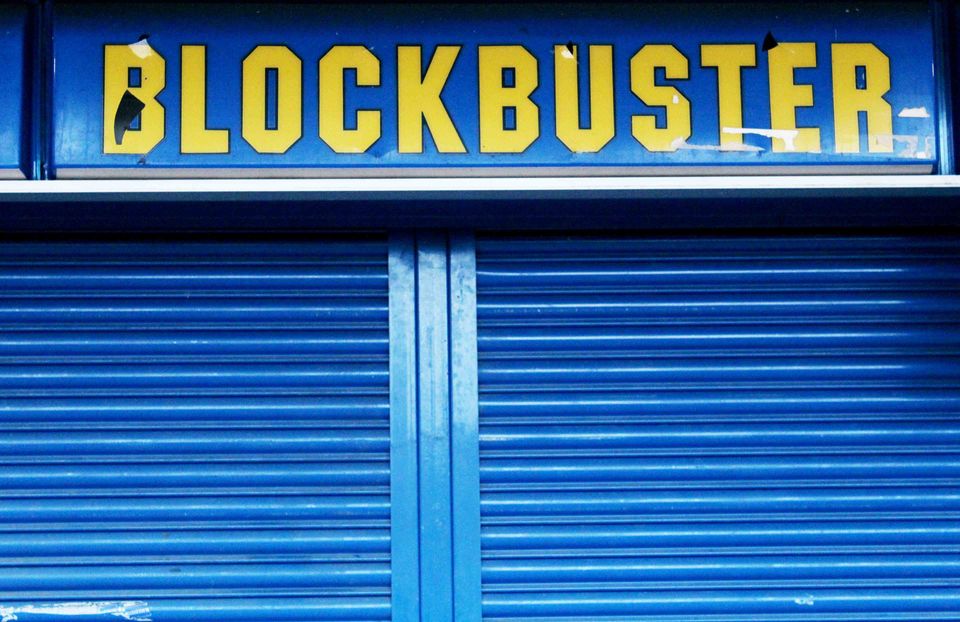Although the hysteria of Y2K was overblown, the year 2000 was a tipping point in western culture. It was that year that the CEO of an upstart tech company reached out to an international industry giant with an offer: buy our company for $50 million and we’ll come on board to help innovate yours.
Maybe it was hubris, or maybe it was naiveté that prevented the industry leader from taking the offer more seriously. Ten years later, the upstart, Netflix, had a 20% share of all viewing traffic in North America on its way to a $203 billion valuation while Blockbuster, the industry leader, was filing for bankruptcy and closing the doors of its 2800 stores the same year.
The cautionary tale of Netflix and Blockbuster provides a perfect parallel for how missions stewardship should be taken more seriously. The writing is on the wall and alarms are sounding regarding the traditional model of open-ended, western-based missionary sending. According to Operation World, we are losing ground in world evangelization.The unevangelized populations are growing faster than we are reaching them. What can we learn from scripture and society that will lead to an increase in missions giving and effectiveness in the next ten years instead of missions bankruptcy?
Remember what the money is for
By the time Blockbuster filed for bankruptcy, it had expanded far beyond renting movies. It sold MTV merchandise, books, toys, and even DishTV hardware and subscriptions. These blurry-eyed investments dragged the company deeper and deeper into debt until the company was strangled by its own lack of vision.
When one agrees to support a western missionary, they do so with the assumption that the funds will be used to share the gospel. But the reality is murky. How, really, are the funds being used? Are they being used effectively?
An extensive study on missions giving found that the average cost of an American to prepare for the mission field by year five was $232,368, compared to $4,800 to $6,000 for four years of support for a national church planter or pastor able to serve from day one1. The same study found that western missionaries spend little time training local leadership. A focus on perpetual western leadership is contrary to the model found in scripture, which emphasizes the importance of entrusting the gospel to local leadership. The models many of us now use for missions are western-centric and may cripple the ability of the local church leadership to grow to complete maturity.
A first step in missions giving stewardship is reconciling the intent of the giver with the usage of the gift. Studies show there is a glaring discrepancy between the two.
Invest as close to the consumer as possible
The Blockbuster model included spending millions on brick and mortar locations filled to the brim with inventory that had nothing to do with movie rentals. The hope was that all these other things would add appeal to moviegoers to get off the couch and go to the store.
The Netflix model was the opposite: appeal to the moviegoer to stay, not go.
In the long run, the decision to invest in infrastructure that encouraged staying close to home paid off. It was clunky at the start, but eventually mail-in and out DVDs gave way to streaming; the rest is history.
Supporting a long-term American missionary is fifty times more expensive than supporting national ministers. For the cost of one American missionary at $70,909 per year, fifty local missionaries can be supported. Indigenous missionaries are 23 times more cost-effective at planting churches. In addition, most indigenous missionaries count an established church to include ten or more people, while American missionaries count church plants with one to five people involved.
Sending long-term American missionaries is the costliest missions method ever devised. Investing in native missionaries, on the other hand, is both nearer to the heart of the apostolic model and faithful missions stewardship.
Redefine the role of “middle man”
The Netflix model is the very definition of disruption.
The gospel itself is an existential disruption, closing the gap between God and mankind. This gift was entrusted to local fishermen, zealots, and tax collectors to be shared with every tribe, tongue, and nation. What strategy did these first missionaries use? Acts chapters 13-20 shows that they went where no other followers existed, shared the gospel, planted churches, trained, and established local leadership - and left. They encouraged these leaders through letters and returned, occasionally, to celebrate, evaluate, and inspire the churches that thrived in their absence.

